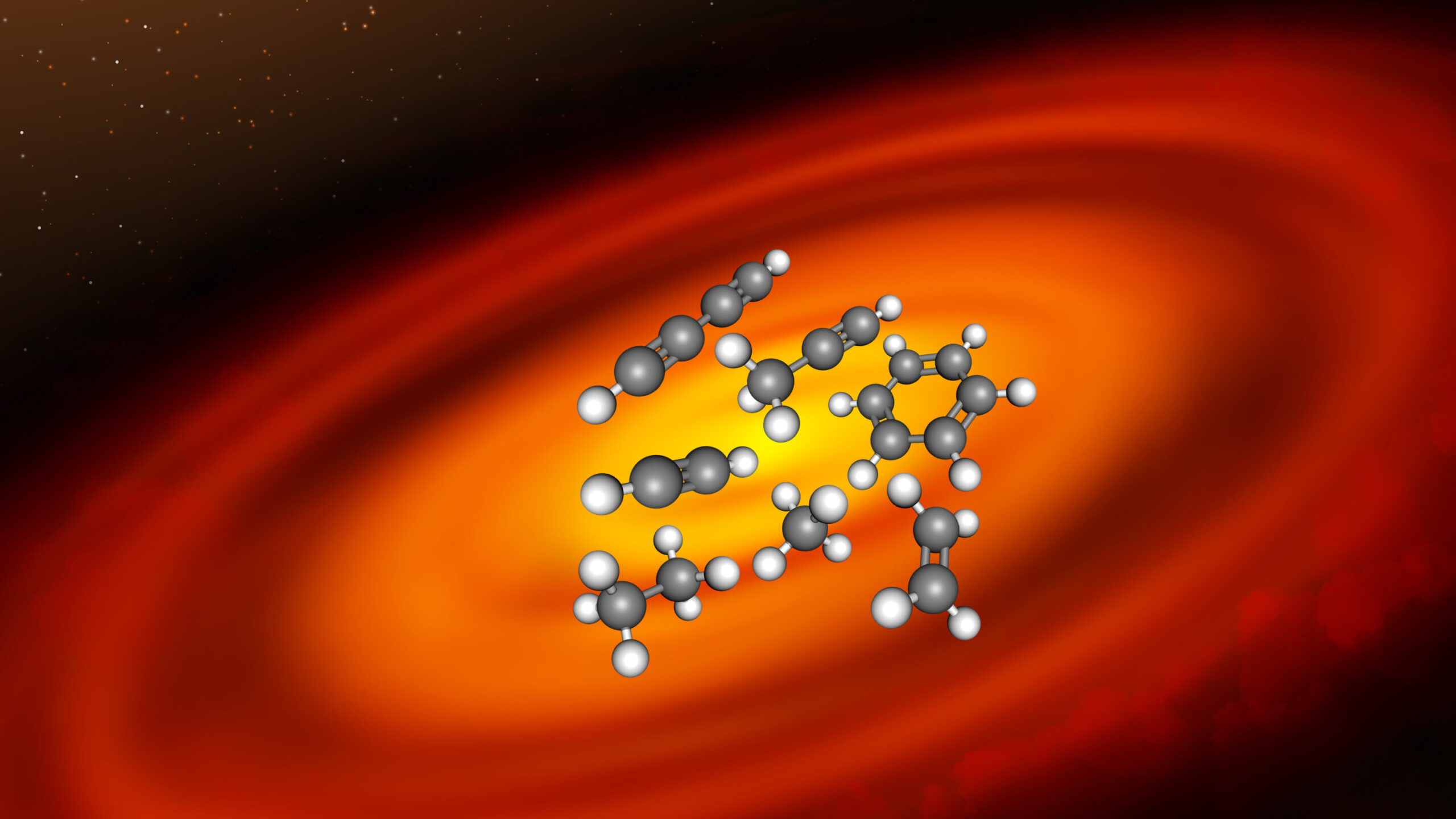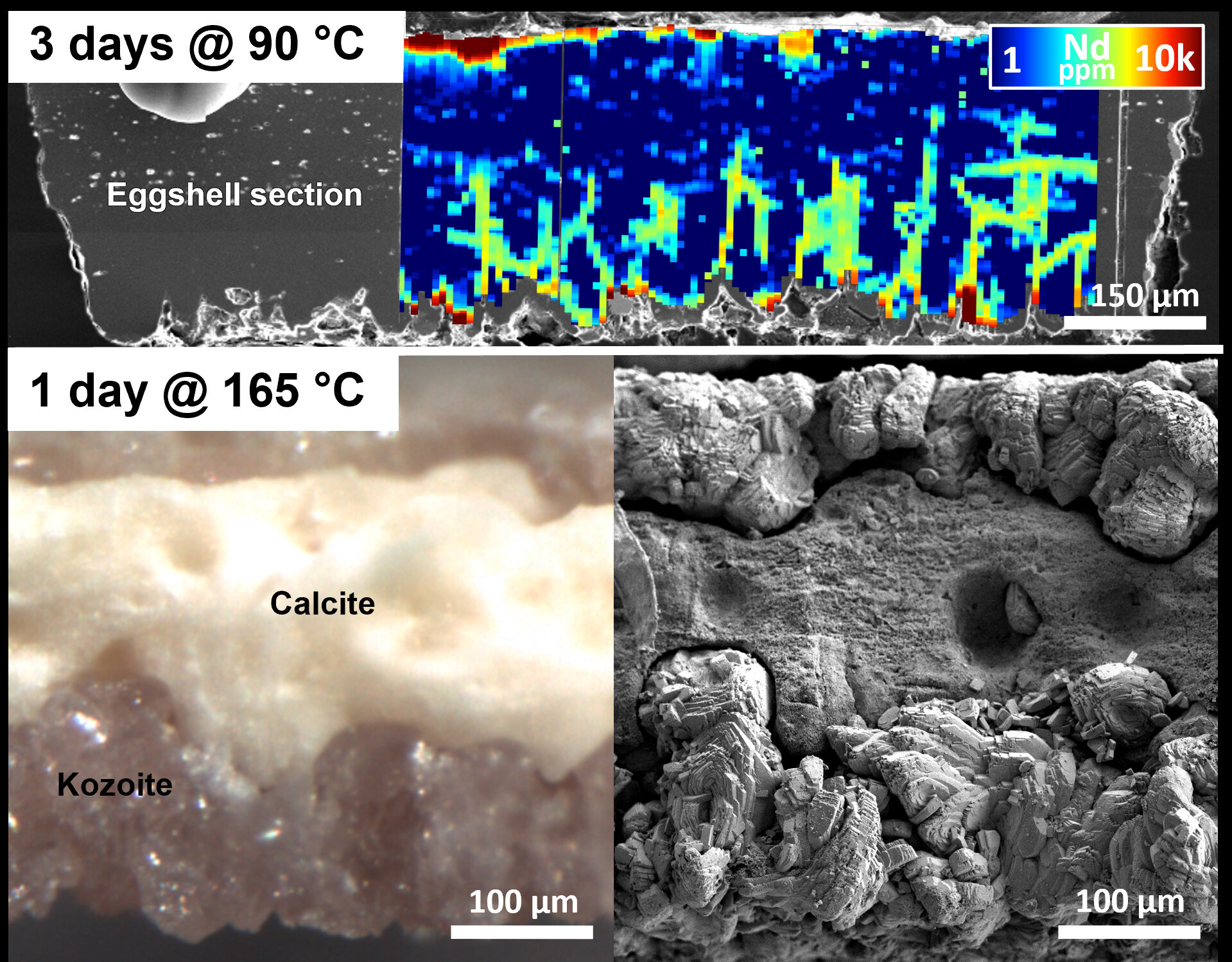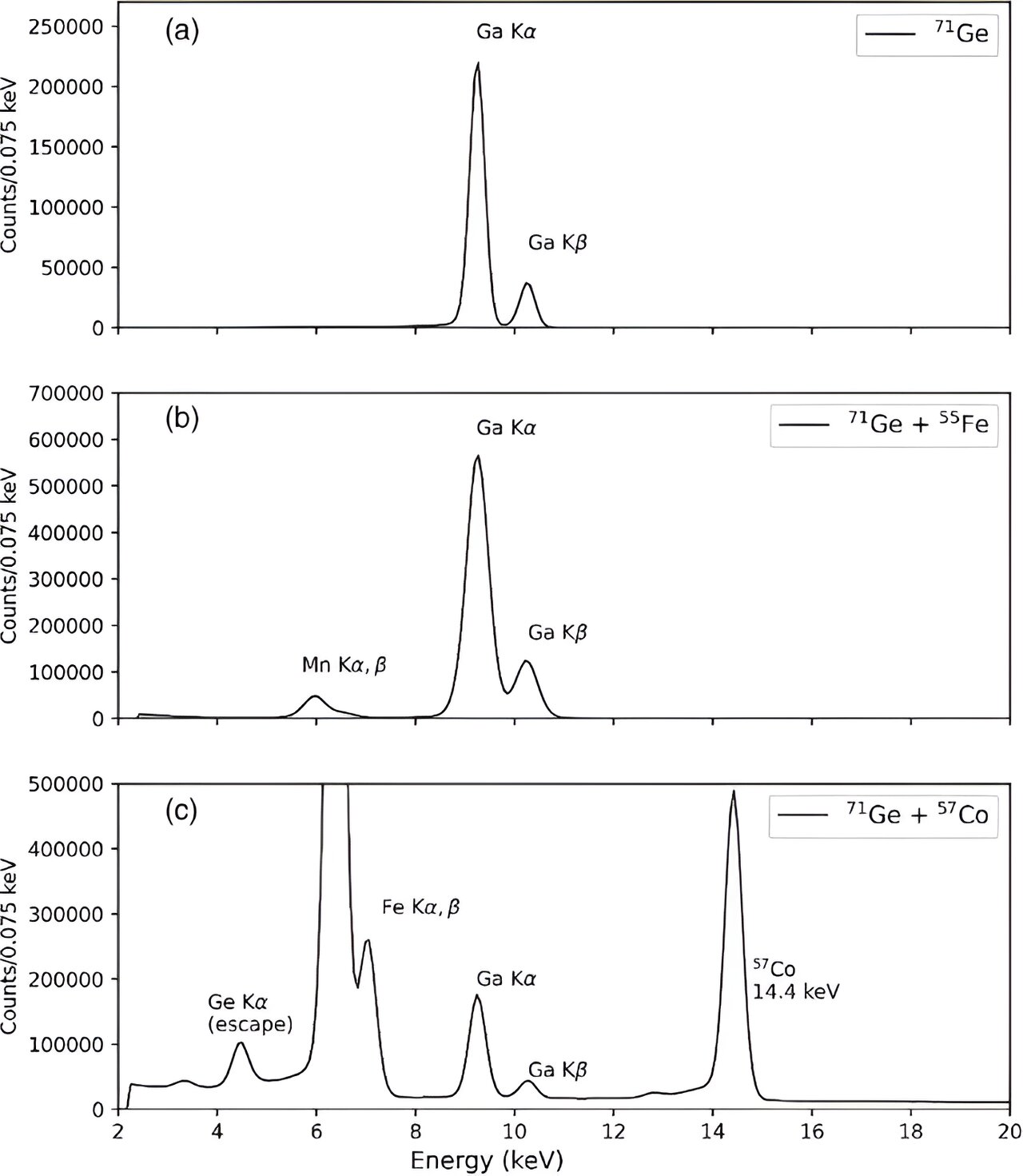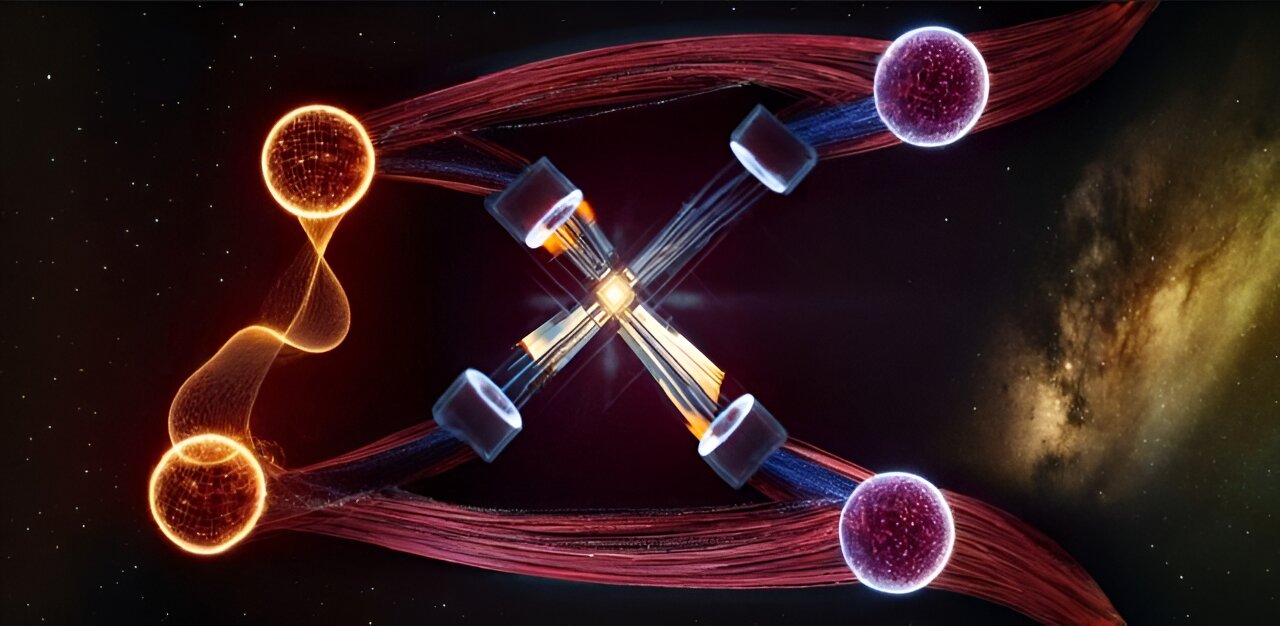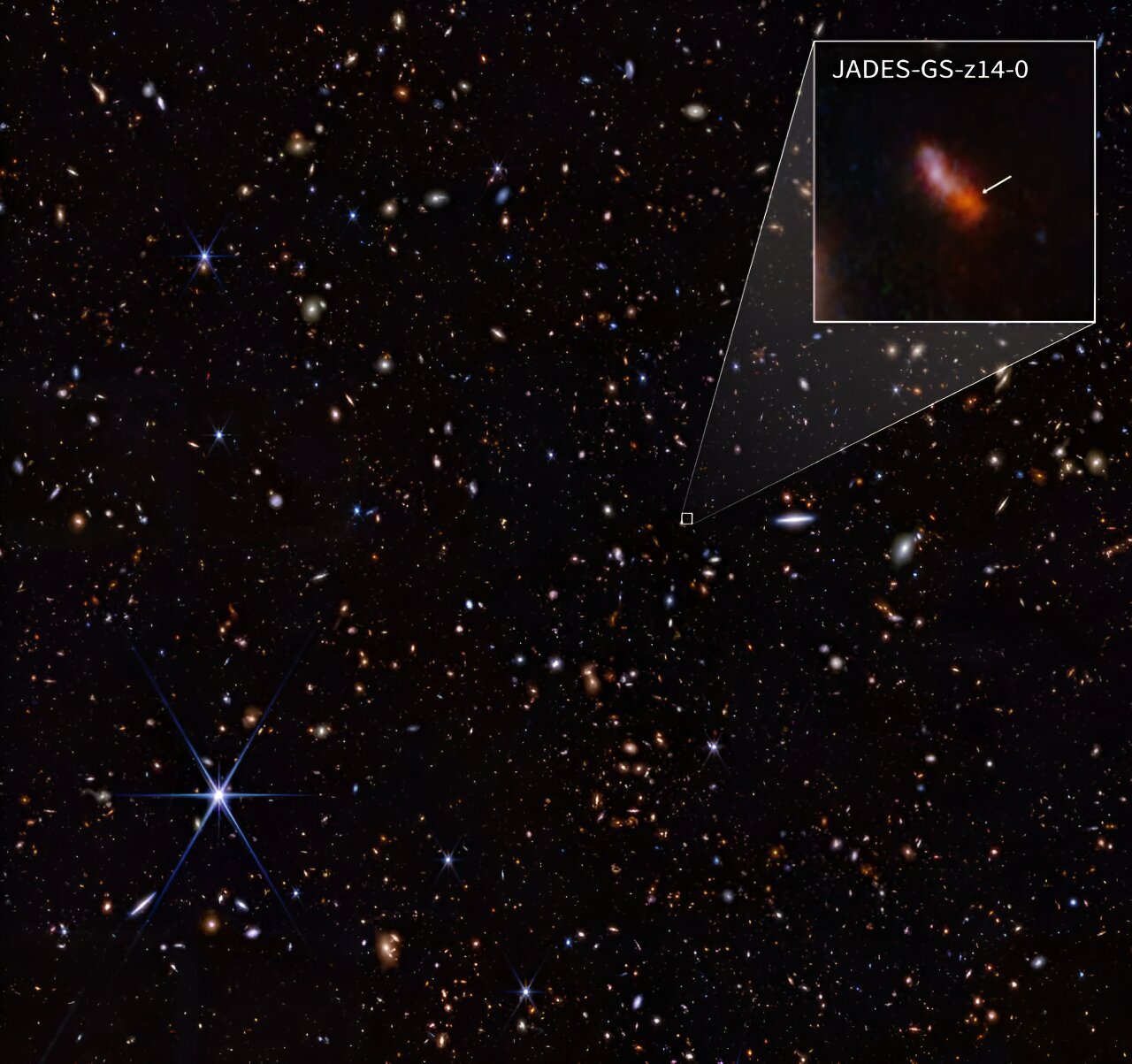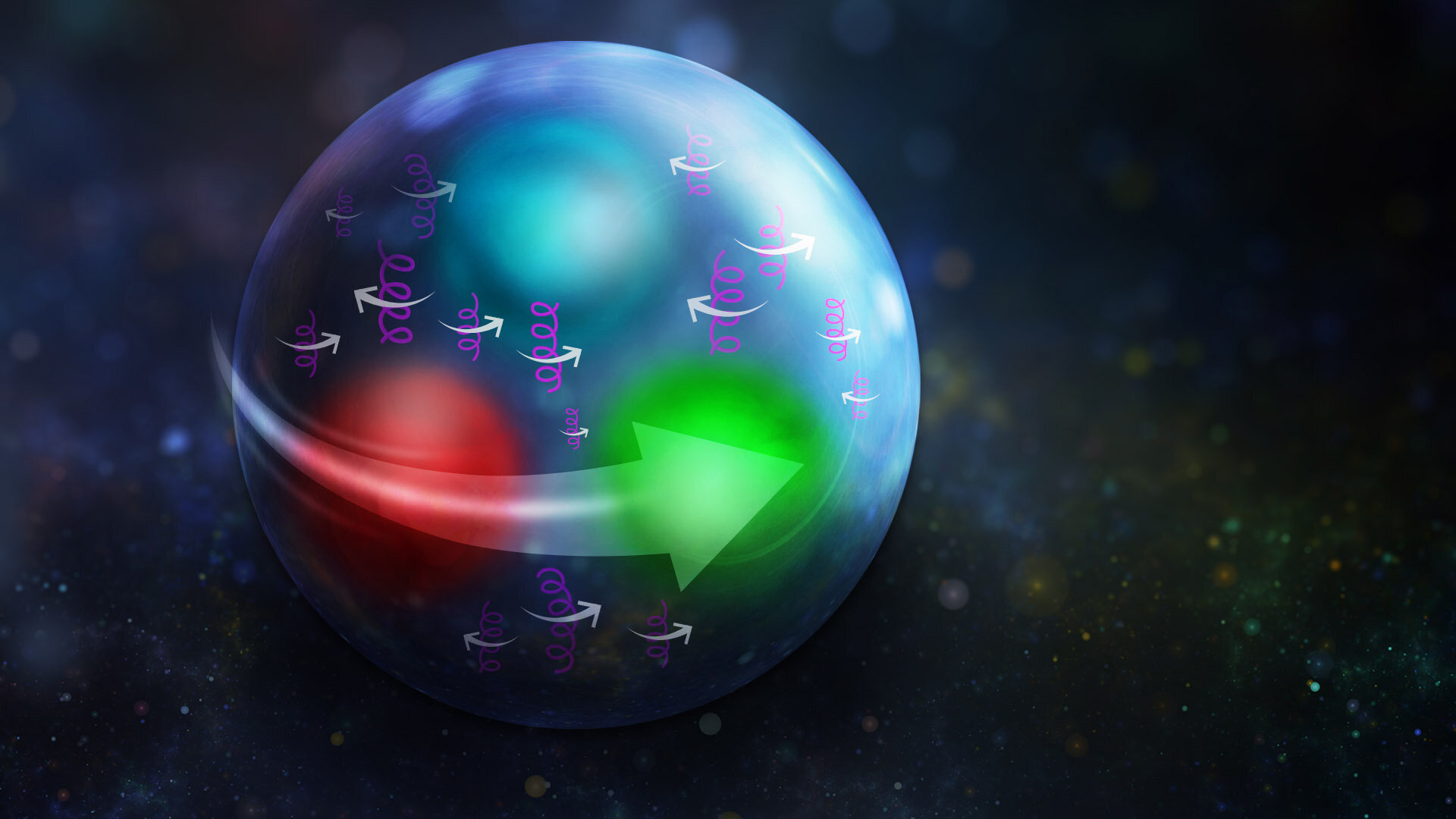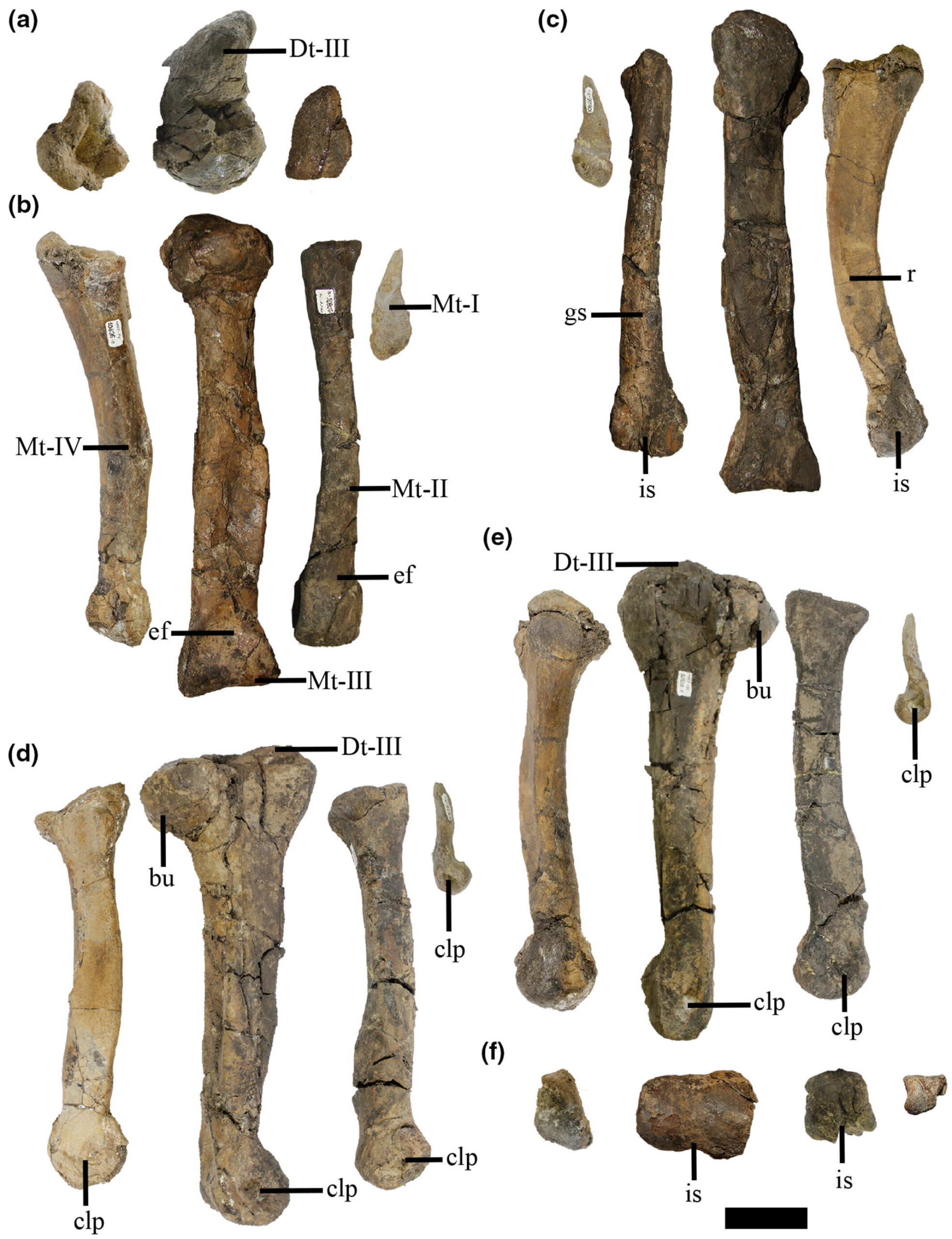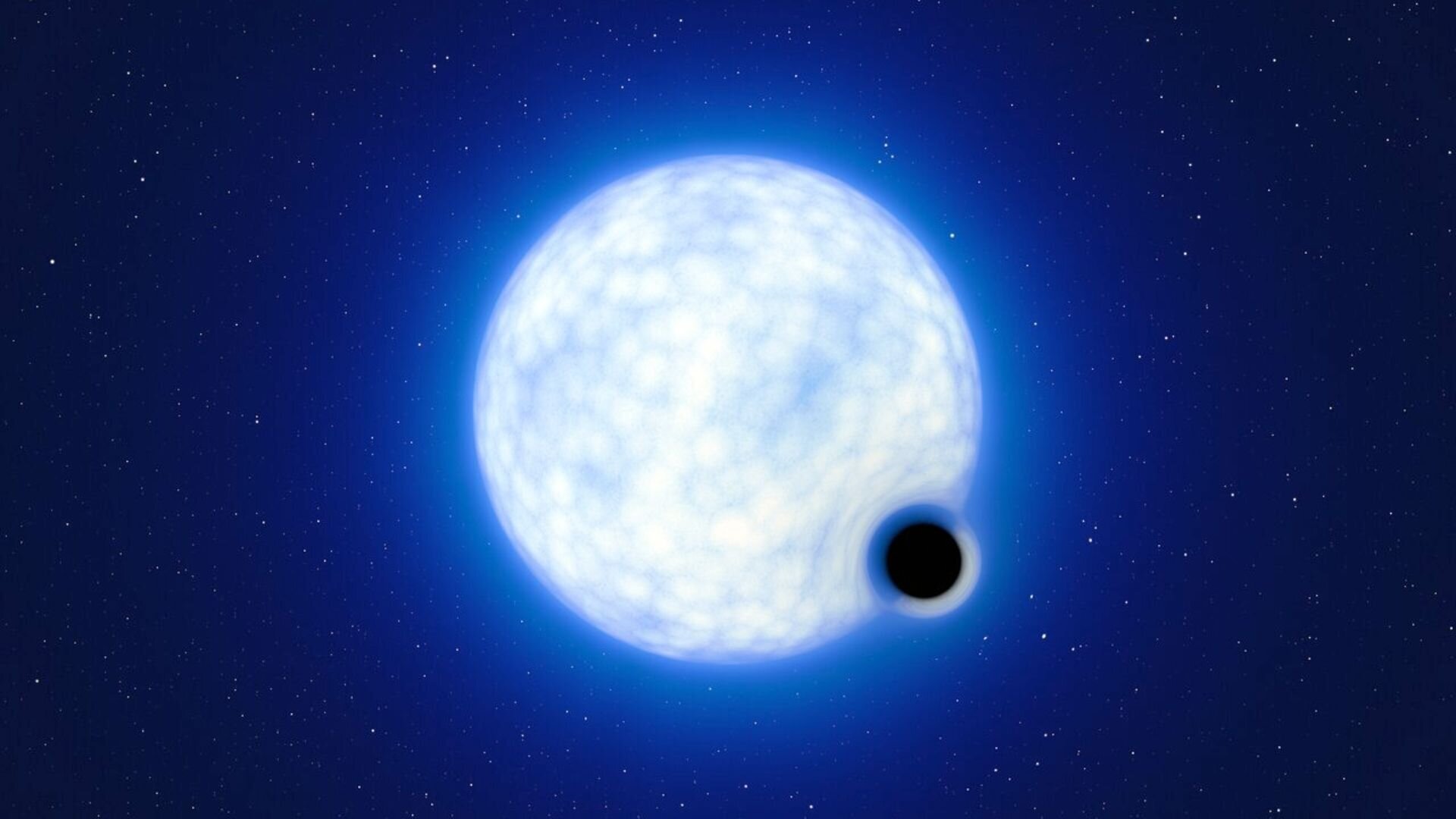JWST discovers a wide variety of carbon-rich gases that serve as ingredients for future planets around very low-mass stars
Artist’s impression of a protoplanetary disk around a very low mass star. It shows a selection of hydrocarbon molecules (methane, CH4; Ethan, C2H6; Ethylene, C2H2; Diacetylene, C4H2; Propyne, C3H4; Benzene, C6H6) detected on the disk around ISO-ChaI 147. Credit: ALMA (ESO/NAOJ/NRAO) / MPIA Planets form in disks of gas and dust that orbit young stars. … Read more
